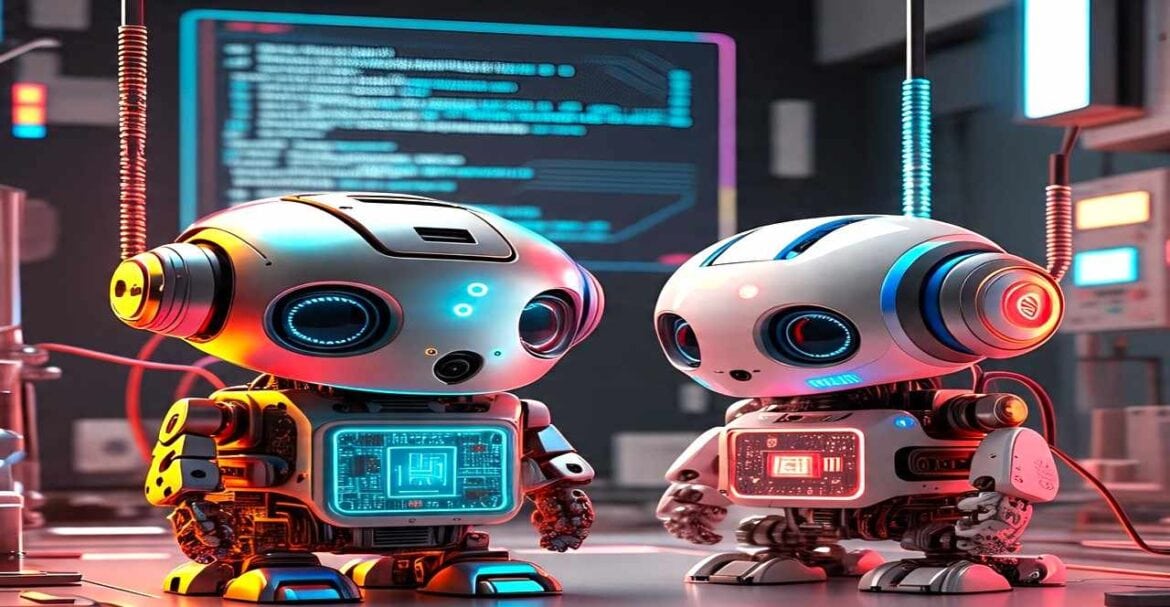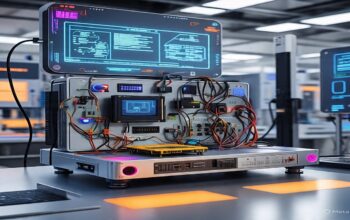Beyond the typical cloud ecosystems, edge computing has completely changed how artificial intelligence (AI) operates. TinyML and Tiny AI are the two buzzwords that dominate this subject. Despite being interchangeable, the two technologies cater to different needs in devices with limited resources. This guide explores their applications, clarifies their distinctions, and provides helpful guidance for choosing the best option for your project.
Learning the Fundamentals:
Covered Contents
ToggleTiny Machine Learning (TinyML): What is it?
One type of machine learning that allows models to run on smaller, less powerful machines is tinyML. TinyML refers to hardware, algorithms, and software that can understand sensor data on such devices using incredibly little power, making them ideal for battery-powered devices and always-on applications.
These versions have a battery life of months or years because they consume less than 1 milliwatt (mW). On-device inference, or processing data locally without cloud access, is the main focus of TinyML. By doing this, latency is reduced, privacy is enhanced, and bandwidth costs are reduced.
Key Features of TinyML:
-Hardware Restrictions: Utilizes MCUs like STM32, ESP32, or Arduino Nano boards.
-Optimized Models: Reduce neural networks by using techniques like pruning (removing unnecessary neurons) and quantization (simplifying numerical precision).
-Use cases include health diagnostics, voice-activated sensors, animal tracking, and predictive maintenance.
What is Tiny AI?
The word “tiny” is used to describe something really little. Previously, the term “tiny AI” described efforts by AI researchers to reduce the size of algorithms, especially those that require large amounts of data and processing power. Any AI system designed for edge devices, including ones with marginally higher power (such the Raspberry Pi or Google Coral), is referred regarded as “tiny AI” in a broader sense. Unlike TinyML, Tiny AI can be linked to more complex models or hybrid architectures that strike a compromise between periodic cloud contact and on-device computing. It facilitates applications like real-time video analytics and natural language processing and is often aimed at milliwatt-to-watt power budget devices.
The primary goal of Tiny AI is,
-Decrease the size of a model
-Improve inference speed
-Preserve high accuracy
Tiny AI will enable us to build small-size AI algorithms that can decide on small devices without cloud access.
Key Features of Tiny AI:
-Execute on microprocessors (MPUs) or custom chips such as NPUs (Neural Processing Units).
-Scales edge inference with cloud retraining for continuous learning.
-Smart cameras, industrial robots, wearables with sophisticated biometric monitoring.
TinyML vs. Tiny AI: A Technical Comparison
|
Factor |
TinyML |
Tiny AI |
|
Power Consumption |
<1 mW |
1 mW – 1 W |
|
Hardware |
Microcontrollers (e.g., Arduino) |
Microprocessors, NPUs (e.g., Coral) |
|
Latency |
Milliseconds |
Sub-milliseconds to seconds |
|
Connectivity |
Optional (offline-first) |
Often hybrid (edge + cloud) |
|
Model Complexity |
Simple (e.g., decision trees) |
Moderate to complex (e.g., CNNs) |
|
Cost per Unit |
1–10 |
10–100+ |
When to Use TinyML
TinyML excels in applications that require maximum energy efficiency, small hardware footprints, and maximum data privacy.
1. Battery-powered sensors
Coin-cell batteries have been used to energize devices such as vibration sensors in industry or soil moisture sensors in agriculture for decades. TinyML is the best option in this regard because it has low power consumption.
For example, a vineyard employs TinyML-powered sensors that monitor the temperature and pH of the soil. The model saves water and energy by irrigating only when required.
2. Applications That Care About Privacy
TinyML’s capability to process sensitive health information locally without having to risk cloud transmission is useful for medical devices like blood glucose monitors.
3. Environments Offline
In remote environments with poor connectivity, TinyML devices work offline. Rainforest animal trackers, for example, identify animal sounds offline.
When to Use Tiny AI
Those applications that require additional processing capabilities or adaptive learning but are not completely dependent on the cloud can be helped by a little AI.
1. On-the-fly Video Analysis
As against uploading video to the cloud, Tiny AI-driven security cameras can recognize anomalies (such as intruders) on-device, preserving bandwidth expenses.
For example, without central servers, Sony’s AI-powered sensors mounted on streetlights study San Jose traffic patterns to enhance pedestrian safety.
2. Voice-activated Assistants
Whereas Tiny AI enables advanced voice commands, such as context-dependent responses on smart speakers, TinyML handles wake-word recognition (e.g., “Hey, Siri”).
3. Industrial Automation:
Robots on the factory floor leverage Tiny AI for quality inspection, employing low-latency inference to detect product defects.
Challenges and Limitations
TinyML Challenges
Model Compression: TensorFlow Lite Micro and other software expertise are required to reduce neural networks without sacrificing accuracy.
Data Scarcity: Most models are pre-trained on big servers; training is more challenging due to limited onboard memory.
Debugging Complexity: Compared to the cloud, it is more challenging to fix mistakes in operating models.
TinyAL Challenges
Performance vs. Power Trade-Off: Models with high power consumption have shorter battery lives.
Hybrid Integration: Software complexity arises when edge and cloud activities are synchronized.
Costs: Purchasing a high-end NPU or GPU raises the price of hardware.
Future Trends (2025 and Beyond)
AutoML for Small Devices: Model development is now accessible to non-experts, thanks to software like Edge Impulse.
Energy-Harvesting Systems: TinyML sensors that run constantly will be powered by solar or kinetic energy sources.
Ethical AI: As TinyML becomes more widely used in law enforcement and healthcare, transparency and guidelines for mitigating bias are crucial.
Decision Guide: TinyML or Tiny AI?
Ask these questions to choose the right technology:
-
What’s the power budget?
<1 mW: TinyML
>1 mW: Tiny AI
-
Is cloud connectivity reliable?
No: TinyML
Yes: Tiny AI (for hybrid models)
-
How complex is the task?
Simple classifications (e.g., hot/cold): TinyML
Real-time video/audio processing: Tiny AI
-
What’s the cost ceiling?
<$10 per unit: TinyML
Higher budget: Tiny AI
Conclusion
TinyML and Tiny AI are complementary tools in the edge computing toolbox rather than competitors. However, TinyML is required in extremely limited locations, while Tiny AI serves as a compromise between microcontrollers and high-power edge servers. You may unleash AI’s potential in even the smallest machines by aligning the requirements of your project with their capabilities.


